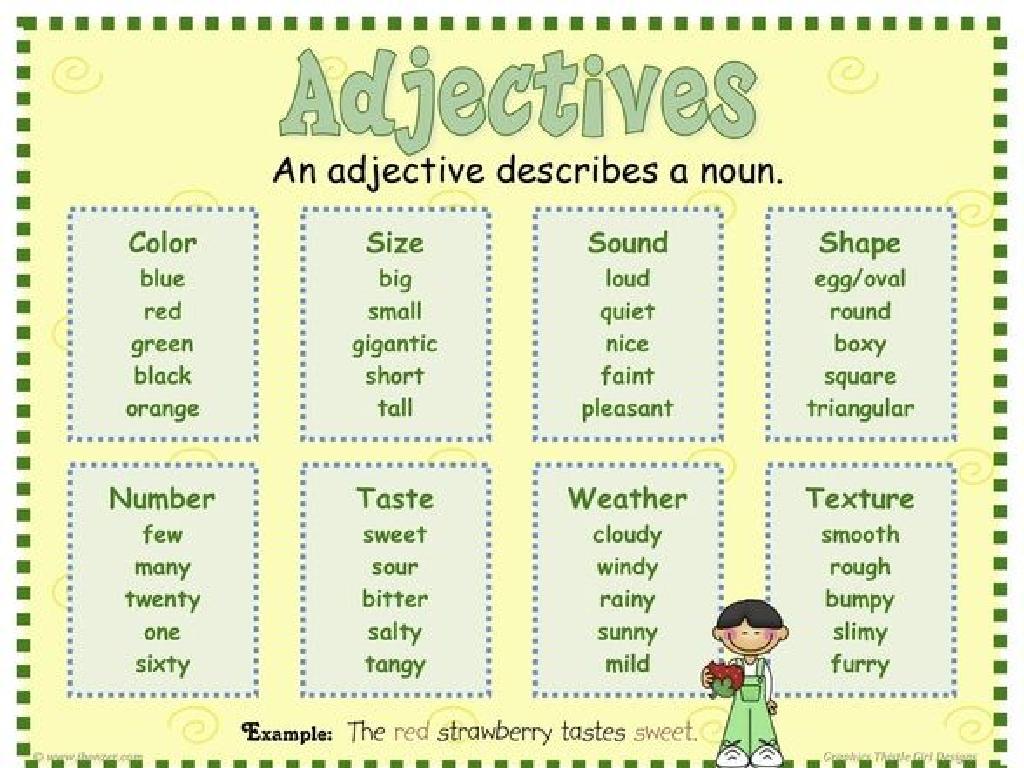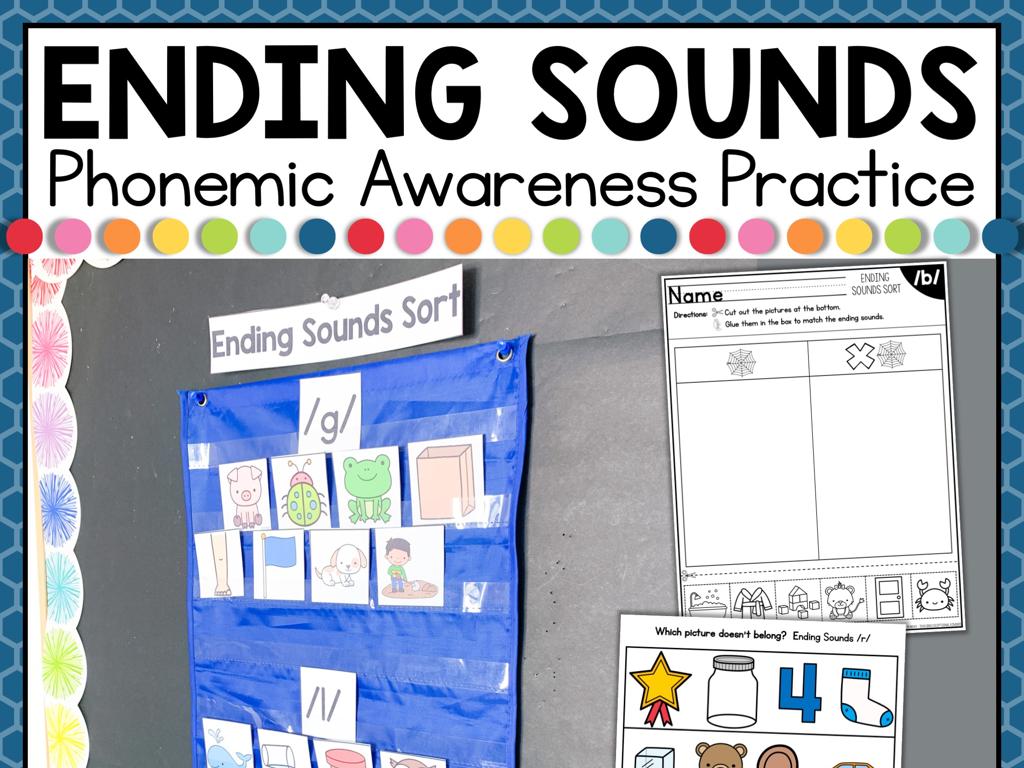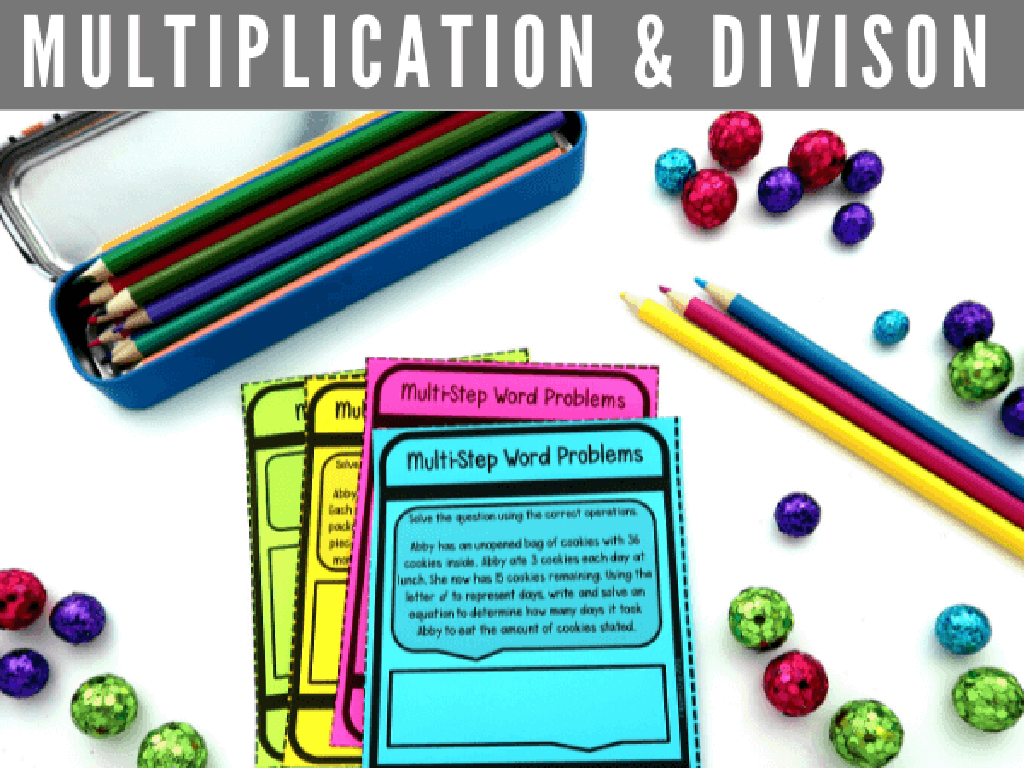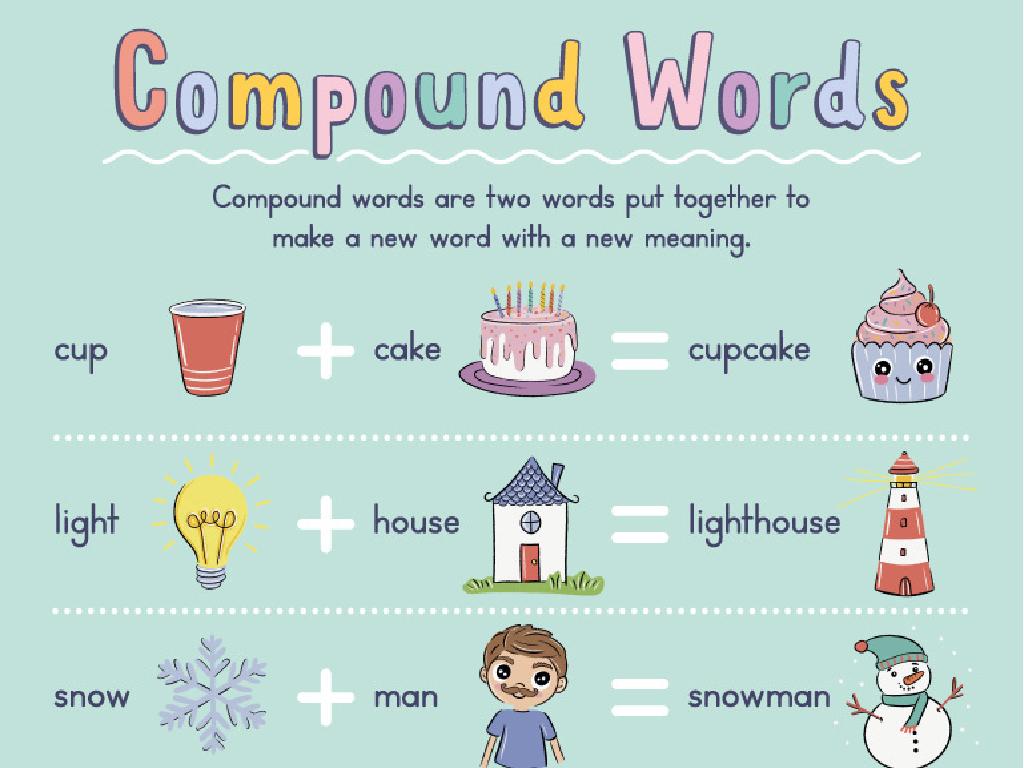The Civil War: War Tactics And The Home Front
Subject: Social studies
Grade: Fifth grade
Topic: The Civil War And Reconstruction
Please LOG IN to download the presentation. Access is available to registered users only.
View More Content
The Civil War: War Tactics and the Home Front
– The Civil War’s impact on America
– A conflict that changed the nation’s course
– War tactics’ role in the outcome
– Strategies like the Anaconda Plan helped the North win
– The home front during the Civil War
– Families faced shortages and supported the war effort
– The Civil War’s relevance today
– Lessons from the past help us understand current issues
|
This slide introduces students to the Civil War, emphasizing its significance in American history. Discuss the transformative impact of the war on the country, including the abolition of slavery and the shift in federal power. Explain how strategic war tactics, such as blockades and battlefield strategies, influenced the outcome. Highlight the role of the home front, where civilians dealt with scarcities and contributed to the war effort through various means. Finally, connect the study of the Civil War to contemporary issues, fostering an understanding of how historical events shape our society and values. Encourage students to consider how the lessons learned from the Civil War might apply to modern-day conflicts and resolutions.
What Was the Civil War?
– Civil War time period: 1861-1865
– Key causes of the Civil War
– Issues like slavery and states’ rights led to conflict.
– The Union and the Confederacy
– The Union (North) fought the Confederacy (South).
– Impact on the United States
– The war shaped America’s laws and society.
|
This slide provides a succinct introduction to the Civil War, aimed at fifth graders. It covers the period of the war, the main causes, the two opposing sides, and the lasting impact on the nation. When discussing the causes, focus on how disagreements over slavery and states’ rights created division. Explain the difference between the Union and the Confederacy geographically and ideologically. Highlight the war’s role in shaping modern America, including the abolition of slavery and the eventual reconstruction of the Union. Use maps and timelines to help students visualize the information. Encourage students to think about how these events changed the country and to consider the importance of unity and equality.
War Tactics During The Civil War
– Understanding war tactics
– Tactics are planned actions for winning battles
– Civil War tactics examples
– For example, the use of trenches and railroads for movement and supply
– Technology’s impact on tactics
– Innovations like the telegraph and railroads changed how wars were fought
– The shift in battle strategies
|
This slide introduces students to the concept of war tactics, specifically during the American Civil War. Begin by explaining that war tactics are the strategies and planned actions that armies use to win battles. Provide examples from the Civil War, such as the use of trenches for defense and railroads for moving troops and supplies. Highlight how technological advancements, like the telegraph for communication and railroads for transportation, significantly altered the way war was conducted. This led to a shift in battle strategies from previous wars. Encourage students to think about how these changes might have affected the soldiers and the outcomes of battles.
Life on the Civil War Home Front
– Understanding the home front
– The home front refers to civilian life during wartime.
– Daily life for families during war
– Families faced shortages and had to ration food and supplies.
– Economic impacts on civilians
– War boosted some industries but caused inflation and scarcity.
– Social changes during the Civil War
– Women took on new roles; social structures were challenged.
|
This slide aims to give students a glimpse into what life was like for civilians during the Civil War. The ‘home front’ refers to the aspects of civilian life in the states away from the battlefields. Discuss how families had to adapt to the absence of many men who were fighting, and how they dealt with shortages of goods and resources. Highlight the economic changes, such as the increase in demand for certain goods, inflation, and scarcity of everyday items. Also, touch on the social impact, including the changing roles of women and shifts in social dynamics. Encourage students to think about how they would have coped with such significant changes in their daily lives.
Significant Battles and Tactics of the Civil War
– Major battles: Gettysburg, Antietam
– Gettysburg: turning point; Antietam: bloodiest single-day battle
– Tactics used in these battles
– Examples: flanking movements, defensive positions
– Impact of tactics on battle outcomes
– Good tactics could lead to victory, poor ones to defeat
– Exploring victories and defeats
|
This slide aims to give students an overview of some of the most significant battles of the Civil War and the tactics that were employed during them. Gettysburg and Antietam are highlighted as key examples. Discuss the importance of Gettysburg as a turning point in the war and Antietam’s record as the bloodiest single-day battle in American history. Explain common military tactics of the era, such as flanking movements, where soldiers attack the sides of an enemy’s formation, and the use of defensive positions to protect troops. Emphasize how these strategies influenced the outcomes of battles and, by extension, the course of the war. Encourage students to think critically about how different decisions by leaders could have changed history.
The Civil War: Women and Children at Home
– Women’s roles during the Civil War
– Women managed farms, worked as nurses, and even disguised as soldiers.
– Children’s wartime experiences
– Children helped at home, some became drummers or messengers in war.
– Family impacts of the Civil War
– Families faced shortages and loss, but also showed resilience and unity.
|
This slide aims to highlight the often-overlooked contributions and experiences of women and children during the Civil War. Women took on many roles traditionally held by men, who were away fighting, and their efforts were crucial to both the home front and the war effort. Children also had to adapt to the new realities of war, with many taking on adult responsibilities. The war brought many hardships to families, including scarcity of goods and the emotional toll of separation and loss. Discussing these points helps students understand the broader social impact of the war and the strength of those who kept life going on the home front.
The Impact of the Civil War on America
– Civil War’s transformative role
– The war led to significant changes in laws and society.
– Long-term economic effects
– Shift from agrarian to industrial economy in the South.
– Societal changes post-war
– Emancipation of slaves altered social dynamics.
– Beginning the Reconstruction
– Reconstruction aimed to rebuild and integrate the South.
|
This slide aims to encapsulate the profound changes that the Civil War brought to America, both immediately and over the long term. It’s crucial to convey to students that the war was a turning point in American history, leading to the abolition of slavery and setting the stage for the Civil Rights Movement. The economic impact was also significant, as the South transitioned from an economy dependent on slavery to one more industrialized. Socially, the war changed the fabric of American life, particularly with the emancipation of slaves. The Reconstruction era was an attempt to address these changes and bring the Southern states back into the Union, which included various challenges and successes. Encourage students to think about how these changes might have affected people’s daily lives and the overall direction of the country.
Class Activity: Civil War Role-Play
– Divide into Union & Confederate groups
– Role-play home front & battle tactics
– Imagine life as a soldier or family member
– Discuss & act out your scenarios
– Reflect on the Civil War experiences
– How would you feel in their shoes?
|
This activity is designed to help students empathize with people from the Civil War era. By dividing the class into Union and Confederate groups, students can engage with history in a personal and interactive way. For the role-play, provide scenarios that depict life on the home front, such as waiting for news from the battlefield, or planning strategies for upcoming battles. Encourage students to think about the emotions and challenges people faced during this time. After the role-play, guide a reflection session where students can discuss their feelings and insights from the activity. Possible variations of the activity could include writing letters as a soldier, debating as military leaders, or acting out a day in the life of a Civil War nurse or journalist.






